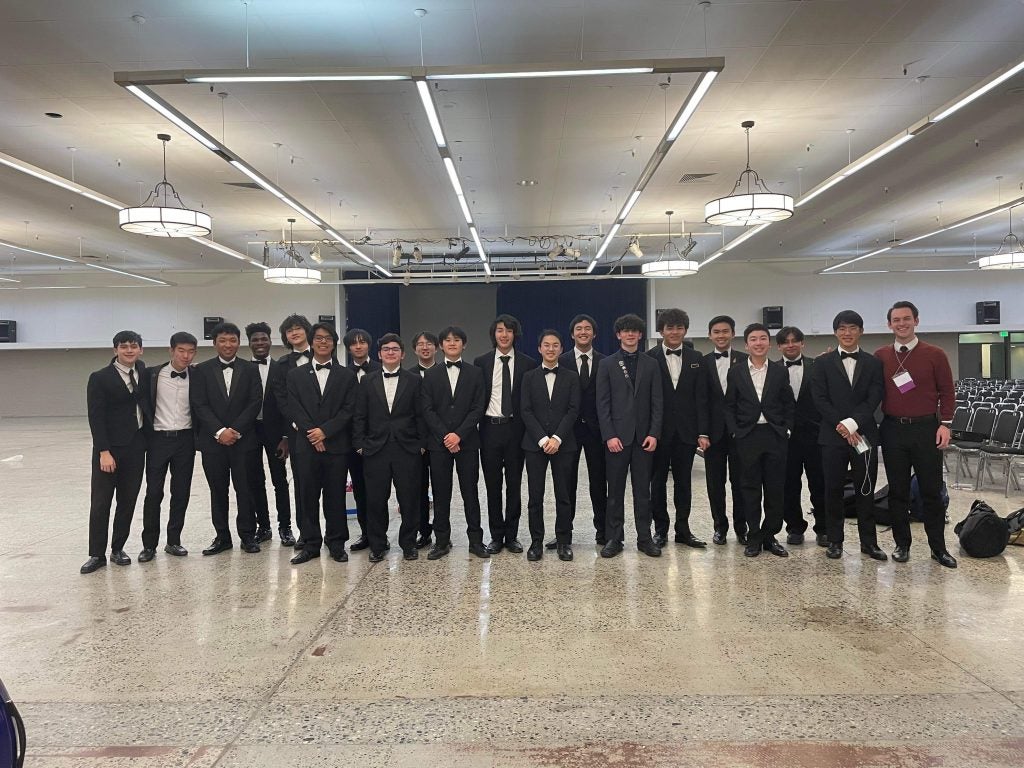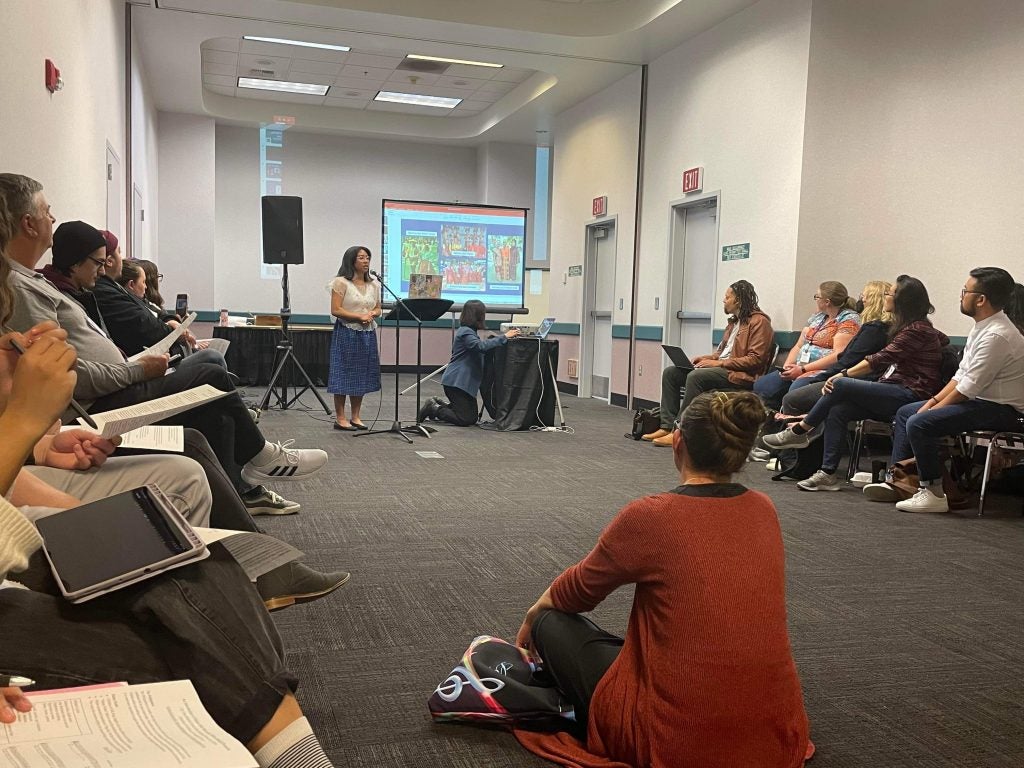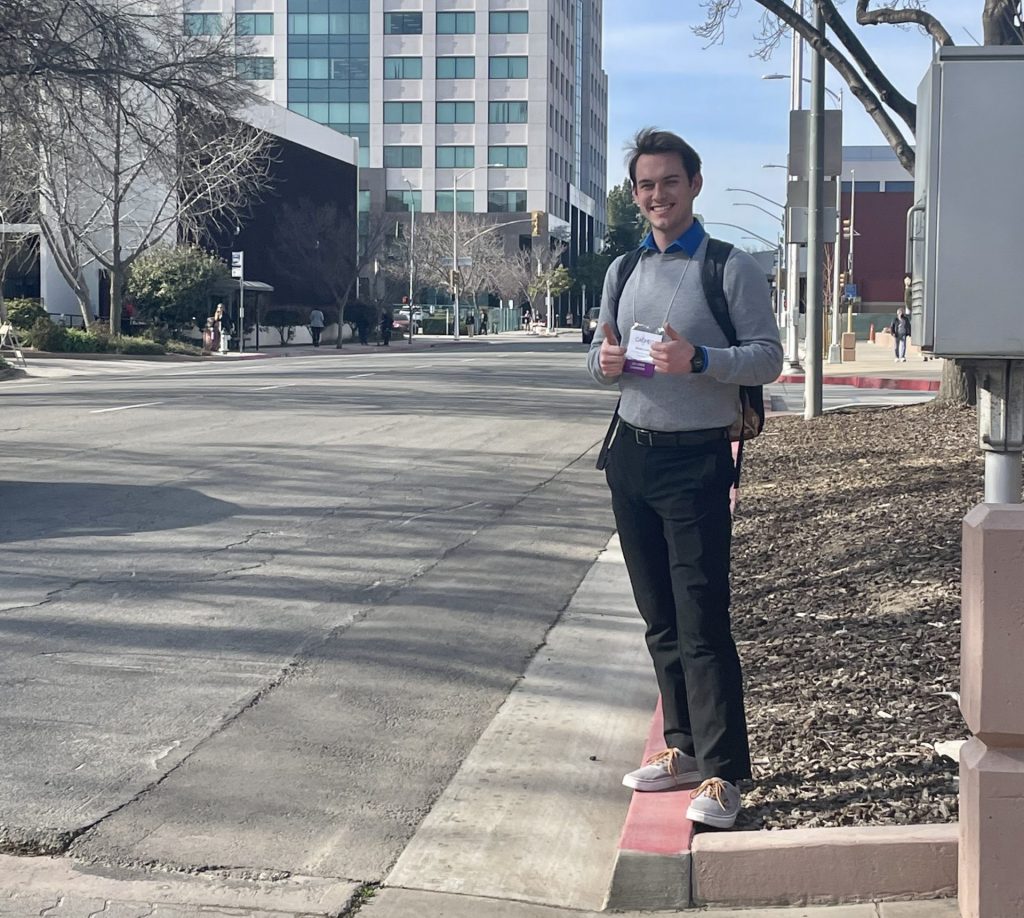The California All State Music Education Conference (CASMEC) is a huge affair, attracting California’s educators and all-state secondary and middle school musicians. Student performers mingle with professional musicians and the college set. UCLA Music Education students attend the conference with faculty every year. It is a powerful opportunity to network and learn from seasoned professionals running clinics and holding sessions.
And these UCLA students don’t just attend. They play vital roles as as presenters and chaperones for the younger students.
“Participating in CASMEC is some of the best, real-world experience that you can get,” said Brendan Lockie, a third-year undergraduate in the saxophone studio at The UCLA Herb Alpert School of Music. “We learn a lot about pedagogy in the classroom at UCLA, but until you have actually tried to get a group of middle school students to cross the street at the same time, make sure they all get their luggage, and get to rehearsal on time, you don’t really understand the job of a band director.”
Lockie, who is currently the co-president of the UCLA chapter of Collegiate National Association for Music Education (CNAME), organized the UCLA chaperones for the 2023 conference that took place in Fresno. In addition to the hard work of overseeing younger students, he described the type of community that the conference builds for his UCLA peers.

“We all stayed together the first night and really got to know each other,” said Lockie. “It was a great experience.”
In addition to helping with the formidable logistics of moving so many students around the conference, UCLA students also present. Lily Chen-Hafteck, professor of music education and founder of the UCLA chapter of CNAME, has selected an undergraduate every year to co-lead a professional development session on world music, based on the students’ own cultural experiences. In years past, students have presented sessions on Japanese, Cuban, Russian, and Salvadorian music.
“I find it so important for music educators to be culturally responsive teachers,” said Chen-Hafteck, who has an established research record on music and culture in the classroom. “I want our students to experience such pedagogy both in their classes and in their work with young people. That’s how our UCLA music education students excel, by being responsive to students’ diverse backgrounds and learning needs.”
This year, Emma Marie Surdilla co-presented with Chen-Hafteck on Filipino music. Surdilla, a third-year undergraduate, grew up in the Filipino community in the Bay Area, and has been active with the Los Angeles Filipino community since arriving at UCLA.
“Honestly, I didn’t feel like I really connected with Filipino arts and culture, at least the traditional side, until I came to UCLA,” said Surdilla. “There is a big Filipino student organization, Samahang Pilipino, that has a number of sub-organizations. I’ve been most involved with Samahang Pilipino Cultural Night, and my role is coordinating the vocal ensembles.”
Surdilla’s presentation focused on incorporating Filipino music of the Rondalla ensemble, which accompanies traditional dance in Filipino culture. Following an introduction with imagery of regions, clothing, and other aspects of culture, Surdilla taught attendees “Bahay-Kubo,” a folk song learned by children in the Philippines.

The song is a window into Filipino life, naming local fruits and vegetables in local gardens. As many folk songs do, it ties a people to place. The songs followed Filipinos to California and are still prevalent in culture.
But the purpose of the presentation was not just to introduce music educators to Filipino culture. It was also to provide guidance on how to bring that culture into their classrooms. They delved into the technical aspects of the Rondalla ensemble—the structure of the music, the kinds of instruments used.
The presentation also featured the folk dance of Tinikling, a dance in three, using bamboo sticks.
“After the presentation, one teacher thanked me for the presentation and told me that her students had been asking for instruction in Tinikling and accompaniment for a while, but that she didn’t know where to start,” said Surdilla. “I think a lot of people feel this way, and it’s great to be able to help them.”
CASMEC also offered opportunities for students to network with professionals, including UCLA alums. UCLA is the only UC with a music education program, and it enjoys a 100% placement rate for graduates. Meeting alums gives current students connections and perspectives from the professional fields.
Johanna Gamboa-Kroesen, assistant professor of music education, is a recent arrival to the School of Music. “The students here have really impressed me with their flexibility and talent,” she said, describing a recent visit with an alumnus Sivory Castellanos in Long Beach. “He graduated in 2021 and was immediately hired into the Long Beach Unified School District. It’s amazing to see him build pedagogical sound musicianship in young students, while fostering an inclusive, culturally responsive learning environment. He has taken the music education training he received at UCLA and combined it with his own passion and style of education. It is truly exciting to see.”
UCLA’s music education program is one of the very few with a credentialling program, offering the opportunity to obtain that credential in a student’s fourth year. Upon completion, students are ready to apply for any K-12 position in the state.
Meenah Alan, who graduated with her bachelor’s degree in 2018, recalled the rigor of the program. “The professors didn’t sugarcoat anything. But they were always there to support us, and they made sure that when we graduated, we came out as capable, respected, and thorough teachers.”
